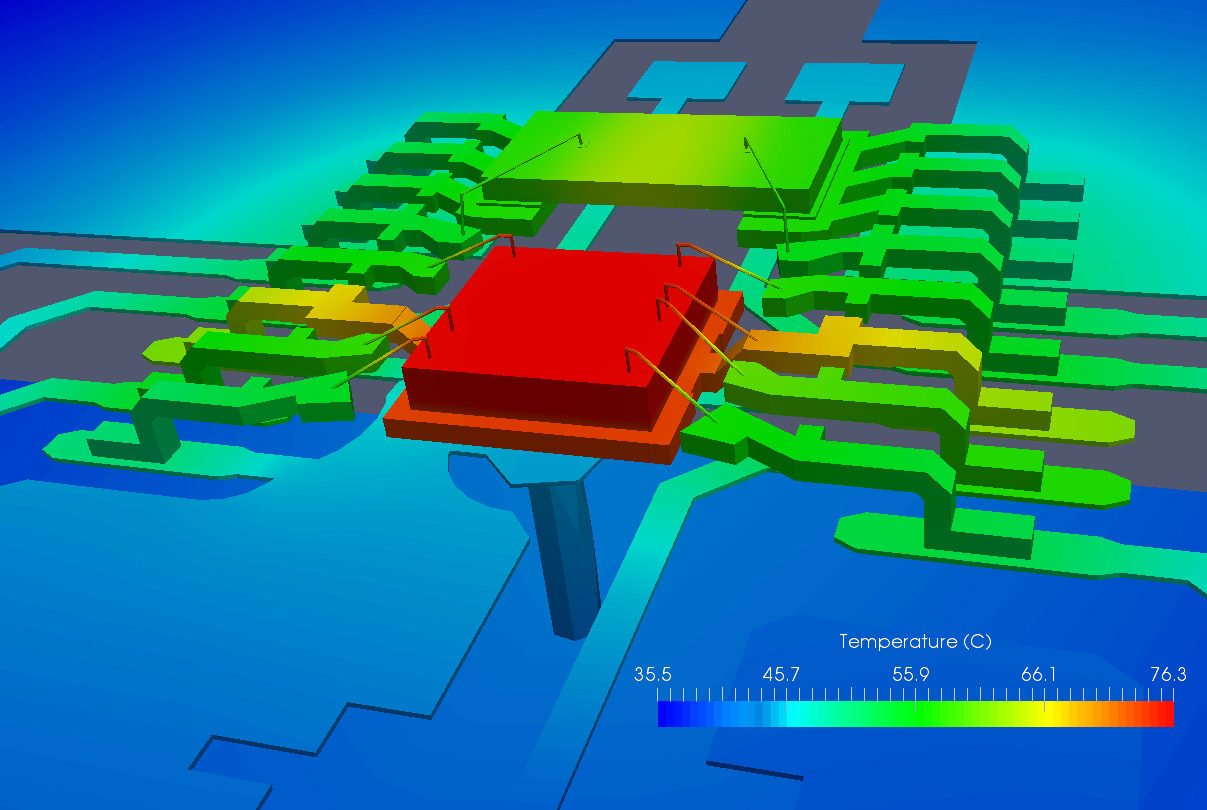A few years back people were saying that the “EDA” problem was solved and that design tools had become commodity. At the same time people hailed ADAS, smart homes, mobile communication and AI as the frontiers of electronics. Perhaps it could be said that layout tools, routers, placers, and circuit simulators had largely matured and often could be used interchangeably to successfully complete electronic designs. However, there were new challenges arising due to the increasing complexity of electronic systems – like the very ones used in cars, smart homes, mobile and AI.
At more advanced nodes and with increasing computational requirements, ICs have become bigger consumers of power. ICs are also being packaged tightly together in configurations using interposers, 3D ICs, etc. Heat buildup in these systems is a very real concern. IC performance and behavior are affected by temperature, and of course too much heat can lead to failure over time or rapidly in some cases. We all have experienced laptops heating up on our laps or cell phones warming up in our pockets. If the exterior is getting hot, what is happening on the inside, from silicon, to package, board, heat sink and chassis?

System level thermal performance cannot be left to chance, it needs to be simulated and well understood during the design process. Up until now there has not been a solution for system level behavior. Cadence has just announced a system level electro-thermal simulator that includes multi-physics and interfaces with other design tools to effectively solve this problem. IC designs are in Virtuoso, packages are in SiP and boards are in Allegro. 3D assemblies come from 3D CAD packages. Celsius can import the full system design and then model thermal behavior.
Power information is obtained from Cadence Voltus, then steady state or transient thermal results can be obtained through Celsius. With accurate temperature information, Voltus can then provide more accurate power information, improving accuracy of the final results. Celsius uses Finite Element Analysis (FEA) and Computational Fluid Dynamics (CFD) to model internal thermal flux and airflow inside of the fully assembled system.
At smaller scales the problem of electro-thermal analysis has been tractable, but with the sizes of current and future generations of electronics systems, there has not been a feasible solution. Cadence Celsius is using massively parallel execution to increase capacity and boost performance. Interestingly, they are using a similar capability for their Clarity EM solver for system level analysis. Celsius can add hundreds of CPUs to effectively increase performance. An example provided by Cadence shows that with 320 CPUs, runtime is 10.2X faster than legacy solvers running on 40 CPUs. Even with the baseline 40 CPUs, Celsius is 2.5X faster.
Building today’s advanced electronic products and systems requires integration of many disciplines at once to ensure good results. For instance, an electronic system might appear to have adequate heat dissipation capacity, but transitions from one operating mode to another or changes in power consumption due to elevated temperatures may lead to exceeding allowable design parameters. Simulation and analysis that includes both thermal and electronic domains is necessary to avoid costly late cycle iterations to fix design problems.
With Celsius, Cadence is delivering its second system-level high-capacity and high-performance analysis tool. Both Clarity and Celsius use highly scalable solver technology to boost capacity so real-world systems can be fully analyzed. They also both accept inputs from 3D modeling, board, package an IC design flows, to permit full integration of all design elements. What they are doing today is a far cry from the era when EDA tools were siloed and only looked at a small part of the overall problem. With this move, Cadence is showing how EDA vendors, with the right vision, can leave behind the notion that EDA is a “solved problem” that offers little differentiation. Companies that adopt these tools will have a significant advantage in their design process that will lead to more successful products. Full information on Celsius is available on the Cadence website.
Share this post via:





Comments
There are no comments yet.
You must register or log in to view/post comments.